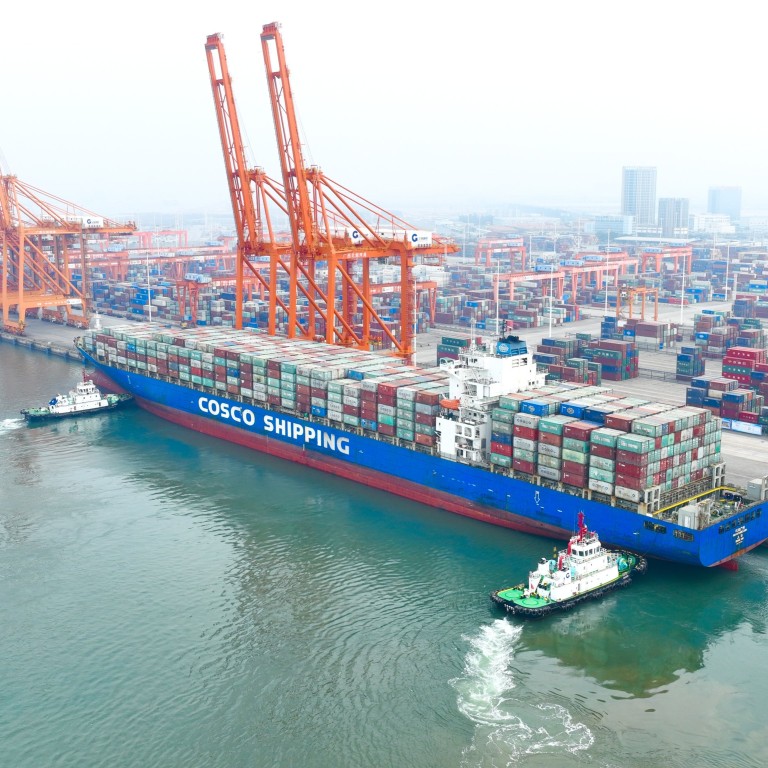
China trade: exports to ‘contract until middle of the year’, but reopening demand set to lift imports
- China’s exports fell by 9.9 per cent in December compared with a year earlier, while imports fell by 7.5 per cent last month
- Overall in 2022, exports rose by 7 per cent and imports rose by 1.1 per cent, while China’s trade surplus last year stood at US$877.6 billion
Amid an abrupt and chaotic reopening, China’s exports in December recorded the biggest year-on-year slump since the Wuhan lockdown in early 2020, with further contraction expected in the coming months, analysts said.
“This can be pinned on weakening global demand for Chinese goods, as well as some disruption to logistics networks and goods supply due to labour shortages amid the reopening wave of infections,” said Zichun Huang and Julian Evans-Pritchard, economists at Capital Economics.
Shipments to the United States and European Union continued to tumble sharply, falling by 19.51 and 17.5 per cent, respectively, compared to a year earlier.
Though supply-side disruptions are diminishing as labour shortages fade amid waning infections, with growth outside China still slowing, exports may continue to “contract until the middle of the year”, Huang and Evans-Pritchard added.
The weak export growth highlights the importance of boosting domestic demand as the key driver for the economy in 2023, said Zhang Zhiwei, president and chief economist at Pinpoint Asset Management.
“The market anticipates more policies to boost domestic consumption. So far policies in the property sector and internet sector have changed quite aggressively and helped to boost confidence in those sectors,” Zhang said.
“But in the consumer space supportive policies are mostly launched by local governments instead of the central government. This may change in March when the new government takes office.”
The rapid fading of virus disruptions as China adapts to living with Covid-19, along with broader policy support, will drive a sharp recovery in domestic demand that will lift imports
The contraction in import value was partially due to lower commodity prices, Goldman Sachs economists said.
Unlike exports, imports are more likely to recover in the coming months due to China’s reopening, although the January trade data may reflect the slump in domestic activity as it takes time for goods to reach China, Huang and Evans-Pritchard said.
“The rapid fading of virus disruptions as China adapts to living with Covid-19, along with broader policy support, will drive a sharp recovery in domestic demand that will lift imports,” they said.
‘Big bang effects’ of world’s largest trade deal yet to be seen as RCEP turns 1
In December, China’s total trade surplus was US$78.01 billion, compared to US$69.84 billion in November.
Overall last year, China’s total trade rose by 4.4 per cent to US$6.3 trillion, compared to a year earlier. Exports in 2022 rose by 7 per cent to US$3.6 trillion, year on year, while imports rose by 1.1 per cent to US$2.7 trillion, trade data showed.
China’s trade surplus in 2022, meanwhile, stood at US$877.6 billion.
Among all its major trade partners, China saw the biggest rise in trade value with Russia last year, with overall trade rising by 29.3 per cent to US$190.3 billion – mainly driven by the Chinese imports of Russian commodities.
The Association of Southeast Asian Nations remained as China’s biggest trade partner in 2022, followed by the European Union and the US.

